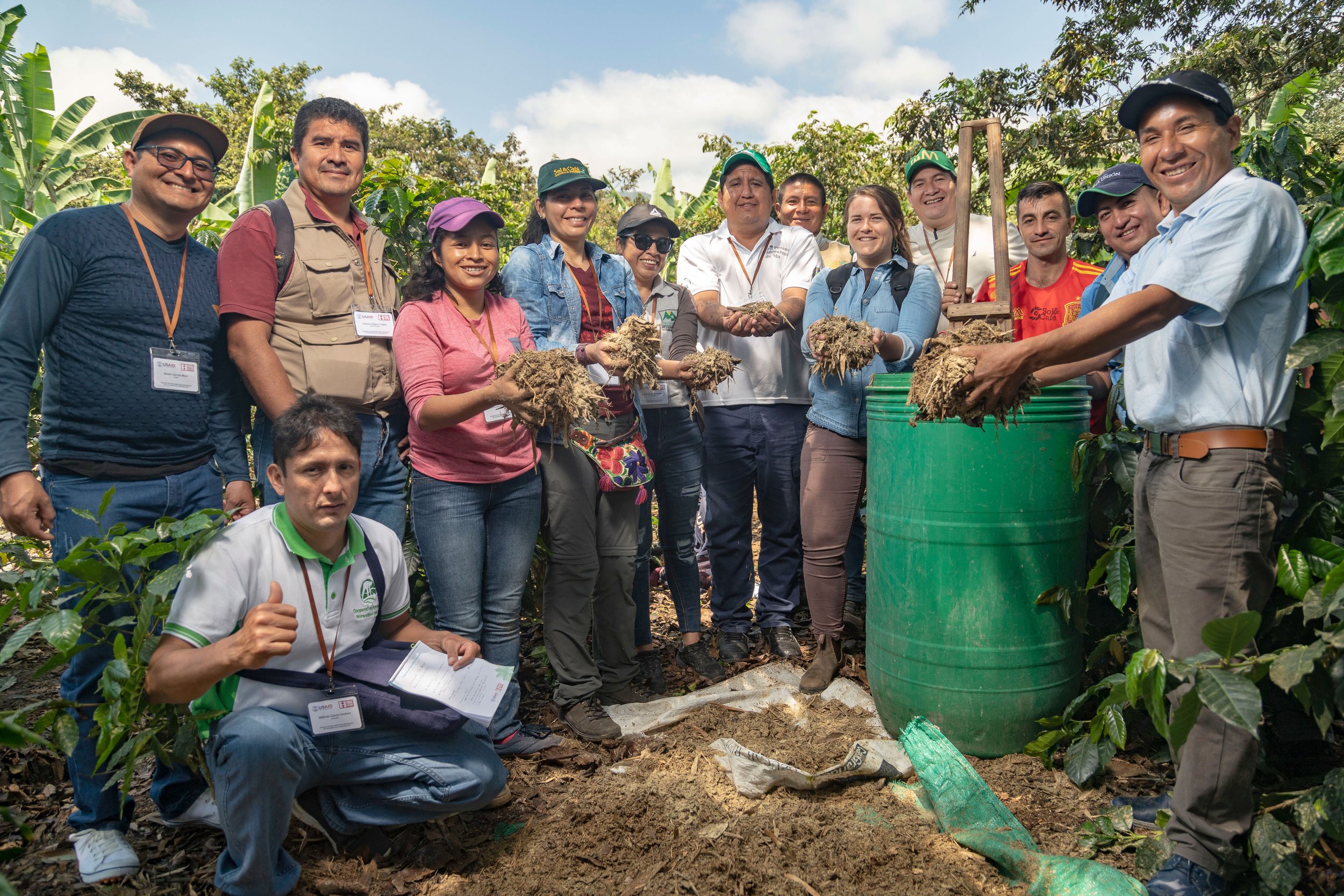USAID Cooperative Development Program
About Our USAID Co-op Development Program
Equal Exchange began this project in 2010 with the goal of strengthening its supply chain partners and engaging with them, and with each other, in new and innovative ways. We believe that for small farmers to succeed in international markets, their cooperatives must not only collect and process their raw products, but must also provide them with the technical assistance that helps them to raise productivity levels, add quality and thus value to that product through improved post-harvest procedures and quality controls, and gain farmer loyalty and patronage through capitalization programs focused on member education and equity.
Productivity
As a company dedicated to providing high-quality organic products to our customers, we are faced with a challenge. Farmers that produce organically consistently have lower yields than farmers who use chemical fertilizers. With the CDP program, teams at various co-operatives tested and validated organic productivity technical packages for cacao and coffee to attempt to bridge this gap. Productivity has increased through the establishment of model farms and through replication of the models.
“Productivity has increased by 106% on average at four co-operatives in the program.”
Joselinda Manueles of COMSA Co-operative in Honduras explains her irrigation system to participants in one of the grant's productivity exchanges.
Key to the success of these programs is the emphasis on strengthening agricultural extension services provided by the co-operative itself, not by a project. Partners also designed elite tree selection programs, supporting their efforts to identify and propagate local varietals that are not only more productive and resilient, but that also taste great.
Towards the final year of our program, we offered innovation prizes to spur some additional creativity on the part of the co-ops to test new techniques. The winning proposals involved ideas related to organic, bio-intensive, and micro-organism fertilizer production, and advanced irrigation techniques.
Quality
Our work in quality began with the installation of seven TCHO Flavor Laboratories in three countries, so farmer cooperatives could gain access to tools that would allow them to evaluate samples the way a buyer would, by tasting unsweetened chocolate made from their cacao beans. We helped them to train a laboratory technician and establish a tasting panel. We now know of at least 30 replicas of these laboratories in multiple countries. In the labs we installed, more than 3,200 samples have been made and graded by the tasting panels. The co-ops have used the information from those evaluations to improve their post-harvest processing techniques and food safety protocols.
“They have been able to create and market specialty offerings that have attracted new clients and allowed them to charge $5,001,599 in price premiums for flavor and fermentation profiles.”
The cacao tasting panel at Fortaleza del Valle Co-op in Ecuador.
When we began, we were surprised to find that there was no shared language that producers and buyers could use to communicate about flavor. Using the specialty coffee industry’s tasting systems as a model, we set out to develop: a Cacao Sensory Analysis Tasting Form and Guide, a Protocol for the Preparation of Liquor Samples, and a Taster Training Program. The objective of these tools is to achievea common and inclusive language for quality among all cacao stakeholders. We hope that this set of open-source resources will continue to empower producers to engage in conversations around the quality of their products with buyers – conversations that they have historically been excluded from. In coffee, we supported Norandino co-operative’s cupping laboratory in achieving recognition from the Specialty Coffee Association as a certified campus for the Q-grader program. We believe this is the first instance that a farmer-owned organization has attained this honor.
Capitalization
Agricultural co-operatives serve their members by buying and selling their crops, adding value through processing, and through other services such as social projects, lending, and technical assistance. In order provide these services, cooperatives often need access to large amounts of capital. Typically, they rely heavily on loans or development projects. However, the opportunity to generate capital through the membership is often overlooked. Over the last seven years, we supported partner organizations in building strong member equity and savings programs and the organizational capacity to deliver these programs. With these programs, co-operatives generate capital that allows them to grow and reduce their dependency on high-interest loans and members have an opportunity to redeem that capital with interest after a certain amount of time invested.
“The total amount of member equity of savings generated as of 2017 from five of our partner co-ops is $4,824,409.”
In an effort to educate and share our experience, we have published a document called “Not Too Poor to Invest: The case for Smallholder Farmer Ownership Programs”. Additionally, with our partners at Root Capital, we finalizing a Training and Advisory Services Module for Co-operative Capitalization that is designed to help cooperatives implement member equity and savings programs.
Equal Exchange and Norandino celebrate five years of successful project work in coffee and cacao.
Countries and Producer Partners
Dominican Republic: CONACADO
Ecuador: Fortaleza del Valle, UOPROCAE
Peru: ACOPAGRO, Oro Verde, Norandino, San Fernando, El Quinacho, CEPIBO
Colombia: Asprocafe Ingruma
Resources
Cacao Sensory Analysis Tools
Protocol for the Preparation of Cacao Liquor Samples (video)















